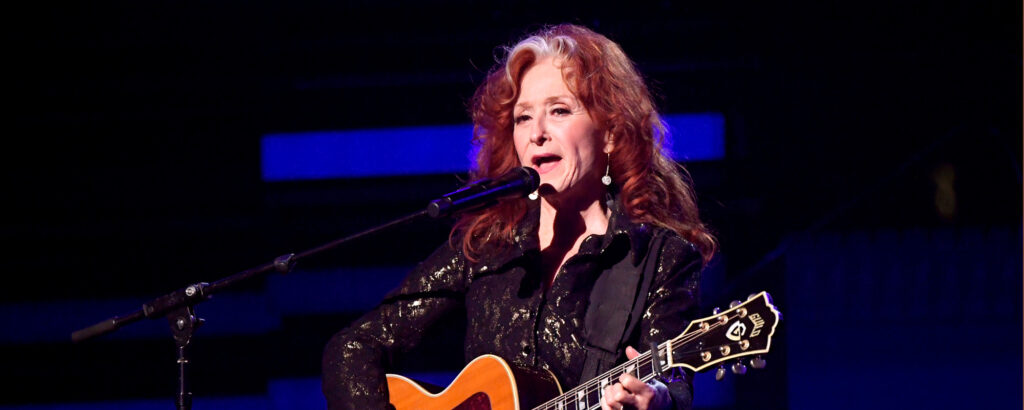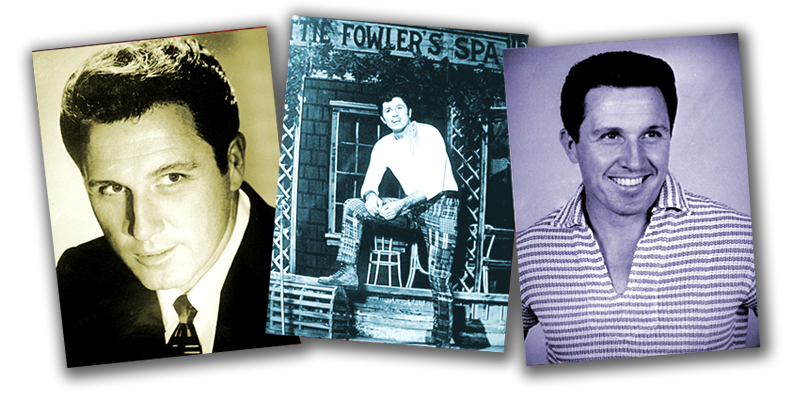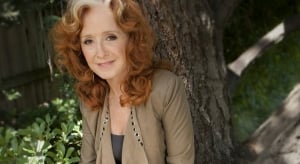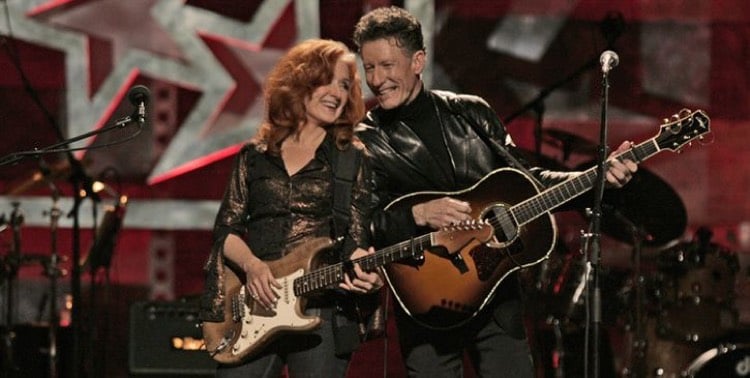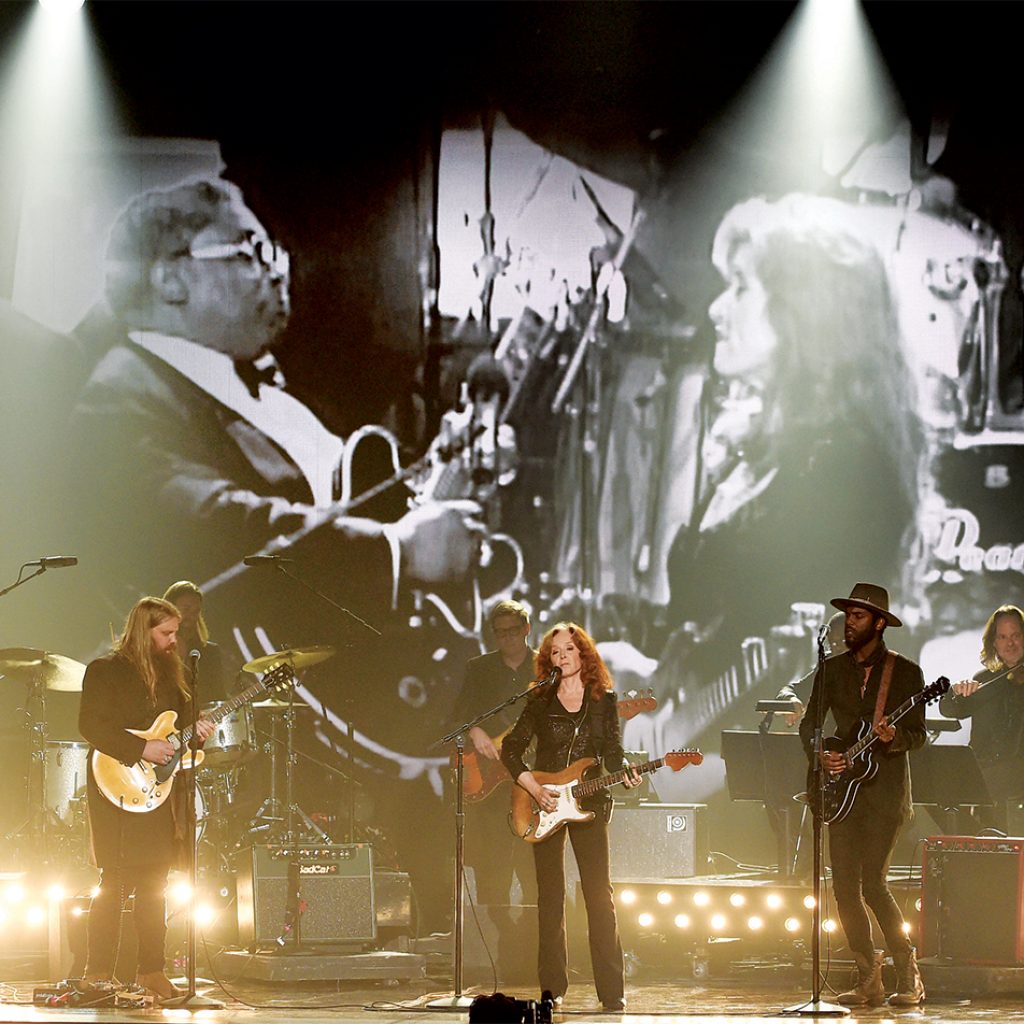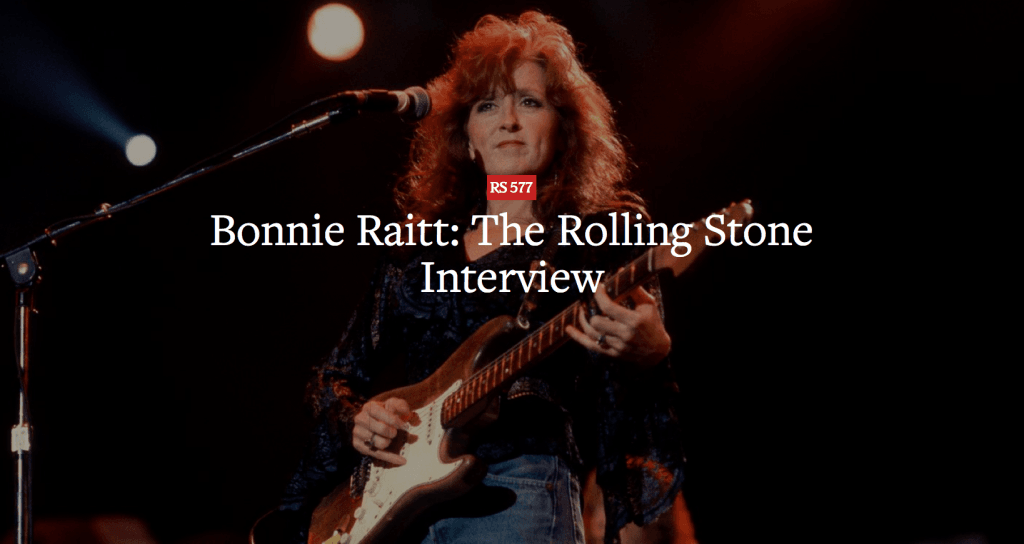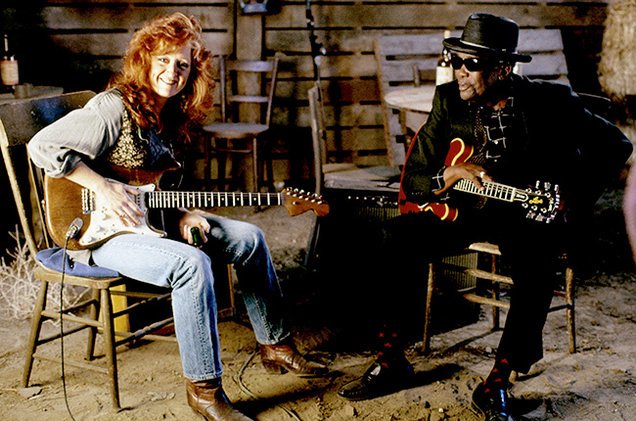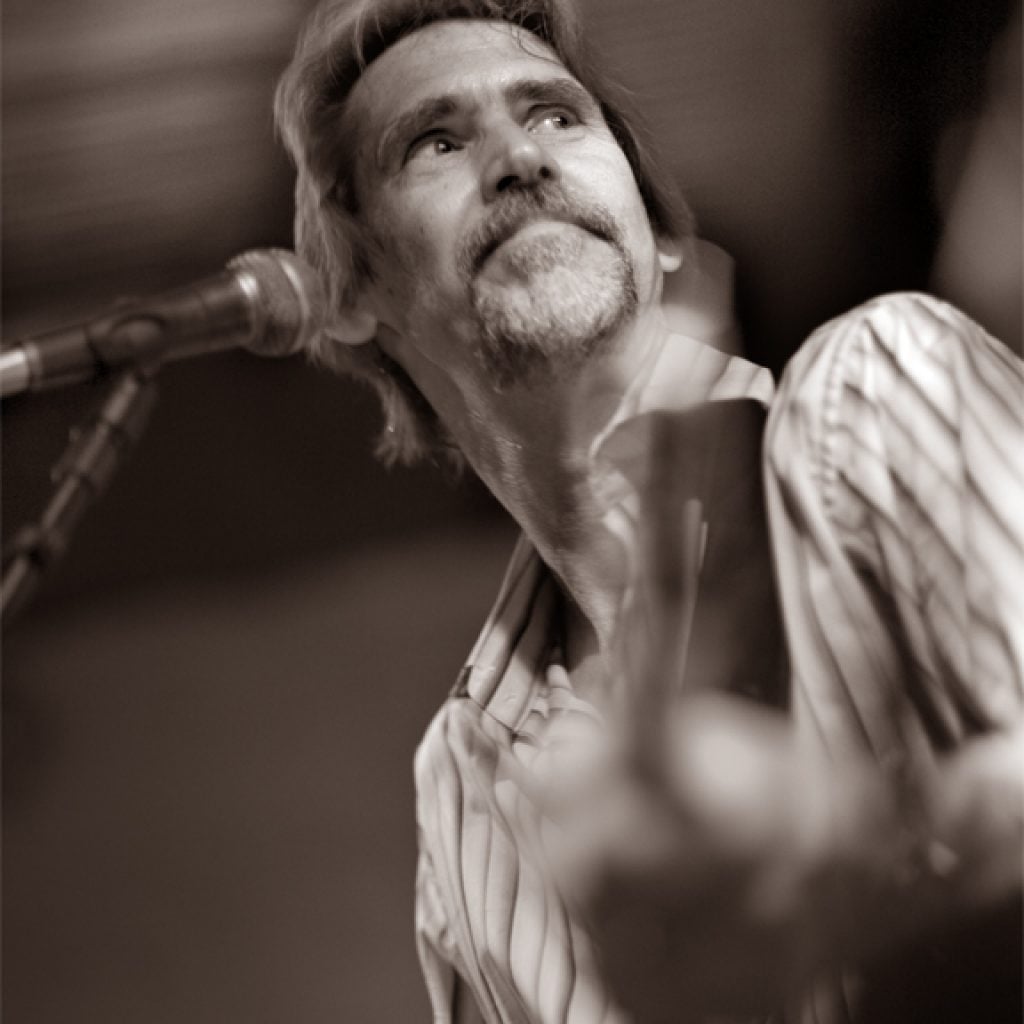

On the eve of the release of her sixth album, Sweet Forgiveness, Bonnie Raitt still remains something of an anomaly in a music biz that usually relegates women to the role of backup “chick” singers. There simply aren’t many women fronting their own bands and playing badass guitar to boot–not to mention the nastiest Delta-styled bottleneck work this side of Muddy Waters–around these days. Add her staunch feminism and socialist political stance–though she doesn’t advertise them in her music save for the implications of an assertive woman telling her man what she wants from him in song–and you have one unusually serious, talented performer in the midst of the “That’s Entertainment” music world mentality.
If you turn the clock back about a decade or so, one of the burning questions in the rock world at the time was, “Can a blue man sing the whites?”–or, more prosaically, “Can a white man sing the blues?” Prompted by the Stones’ frequent use of old blues standards on their early albums and the influence of The Butterfield Blues Band, Blues Project and a host of British bands spearheaded by Cream, there was a full-fledged blues boom going on in the late ’60’s. Many of the veteran bluesmen, Muddy Waters Howlin’ Wolf, B.B. and Albert King among them, found the audiences expanding beyond what B.B. termed “the chitlin circuit” to include crowds of white, middle-class kids at rock auditoriums like the Fillmores.
It’s not surprising that the inspiration for most of the blues-rock of that period came from the gritty urban blues born on Chicago’s South Side. The electric energy and instrumentation of those bands matched the lineups and inclinations of most rock groups and lent itself perfectly to the extended jamming and guitar heroics so beloved of that era. And the macho bravado of songs like “I’m Ready” was custom made for the arrogant outlaw stance cultivated by most rockers.
But, save for the staunch folkic crowd who had been into the music all along, two facets of the blues tradition were largely passed over at the time—the acoustic bottleneck guitar stylings of the country bluesmen from the Mississippi Delta and the legacy of the blueswomen. Though Cream may have made the names of Robert Johnson and Skip James familiar to many by recording versions of “Crossroads” and I’m So Glad”, their high energy, high decibel interpretations bear little resemblance to the original versions. Likewise, Janis Joplin became the symbol of the blueswoman for most rock fans but her music seemed to rise more from the need to be accepted and loved than the inner strength one senses in the original ladies who sang the blues.

Cambridge was one urban center with a thriving folk-blues club scene and a large enough student population to keep it alive when interest in blues subsided. Enter Bonnie Raitt as a seventeen year old Radcliffe student into a musical and politically activist environment perfectly suited to her tastes. Part of a musically oriented family (father John was the leading man in Broadway musical productions of Carousel, Oklahoma! and The Pajama Game), Bonnie picked up on guitar early and started developing a style based on the classic country blues of Mississippi John Hurt, Muddy Waters, Robert Johnson, and John Hammond. Hanging out around Beantown blues clubs during her college years, Raitt eventually made the acquaintance of future manager and fellow blues freak Dick Waterman, the Cambridge impresario who managed most of the venerable bluesmen who came out of retirement in the wake of the resurgence of interest in blues. A summer vacation in Europe introduced Bonnie to the music of Sippie Wallace, the salty blueswoman who Bonnie calls her sassy grandmother and others consider her mentor. Raitt gradually started to appear in clubs as a solo act and through the introductory efforts of Waterman, began playing with and learning from long-time idols like Mississippi Fred McDowell at various folk festivals throughout the East Coast. When she started making enough money to afford it, she enlisted the services of Freebo, the bassist for the Philly-based Edison Electric Band who has been with her ever since. Word of her performances gradually reached record company ears and Bonnie, despite political reservations about becoming part of the male-dominated and profit-oriented music industry, signed with Warner Brothers in 1971.
Her debut album, simply titled “Bonnie Raitt” and released later that year, demonstrated that here was one artist determined to keep as much creative control over her career as possible. Recorded on a four track machine in a garage on a Minnesota farm and featuring a Minneapolis bar band and Chicago veterans Junior Wells (harp) and A.C. Reed (tenor sax) as backing musicians, the LP has the ambience of a bunch of friends who got drunk one sunny afternoon, decided to play some music and happened to have a tape recorder around to preserve it for posterity. Bonnie’s blues roots are fully displayed on her own arrangements of Tommy Johnson’s “Big Road (a close relative of “On The Road Again”) and Robert Johnson’s classic “Walking Blues” and two Sippie Wallace tunes that still frequently pop up in Raitt’s live repertoire, “Mighty Tight Woman” and “Woman Be Wise”. Bonnie herself contributes two songs, a soulful ballad in “Thank You:” and “Finest Lovin’ Man”, but perhaps the most affecting cut on the album is a gentle, compelling treatment of Paul Siebel’s “Any Day Woman” that effectively combines Bonnie’s vocal and instrumental strong points with her feminist sensibilities.
1972 found Bonnie still out in the country making music but moving her base of operations east and adopting a more orthodox approach to recording. Cut in Woodstock with Cambridge friends and new acquaintances in John Hall and Wells Kelly of Orleans as well as English jazz bassist Dave Holland, “Give It Up” firmly solidifies her credentials as the ballsy blues mama on the title track, the adaptation of Chris Smither’s “Love Me Like A Man” and another Sippie Wallace number, “You Got To Know How”. More importantly, the album signals an expansion of Bonnie’s musical horizons beyond blues to include songs by some of the more talented, and at this point obscure, young songwriters. Jackson Browne and Eric Kaz and Libby Titus (the first recorded version of “Love Has No Pride” that I’m aware of) are both represented but the single stand-out track is Joel Zoss’ haunting, medieval-flavored ballad, “Stayed Too Long At The Fair”.
In the interim period before the release of her next album, Bonnie went through a number of changes that would be reflected in her music. First, she abandoned her Cambridge base and in the company of her ever faithful side-kick Freebo, relocated in Los Angeles. There she succumbed to that dreadfully contagious and delightfully incurable disease commonly know as Little Feat-itis, a condition that prompted her to enlist the services of Lowell George as producer of “Takin’ My Time“. When that arrangement didn’t work out– due to heavy emotional involvement between artist and producer– John Hall assumed the production chores.
The result finds Raitt making her first tentative steps toward moving into the pop mainstream. The blues base is still there, but it comes out more in the melancholic flavor of her vocals than the songs themselves and she breaks out the bottleneck only for the MIssissippi Fred McDowell medley, “Write Me A Few Of Your LInes/Kokomo” (originally planned as a duet with McDowell for the “Give It Up” LP gut postponed when the aged bluesman succumbed to cancer the day before he was scheduled to leave for Woodstock_). The sound is smoother and more r&b oriented, the material again expanding to include vintage r&b and calypso (“Let Me In” and “Wah She Go Do”, respectively) as well as treatments of songs by Mose Allison and Randy Newman. Though “Takin’ My Time” marks the start of Bonnie’s exclusive reliance on outside material, it’s a strong, transitional album highlighted by the great, up tempo r&b performance of “You’ve Been In Love Too Long” and a desolate, Little Feat sound-alike version of Chris Smither’s “I Feel The Same”, complete with George’s trademark lonesome coyote wail slide work.
But the expense of changing producers in mid-album put Bonnie in an exceedingly awkward financial position with Warner Brothers. Forced to hire a producer with a proven track record at company insistence, she picked Jerry Ragovoy and journeyed to New to record her first album with unfamiliar studio musicians and arrangements largely contributed by Ragovoy. The resulting collaboration is a polished, uptown r&b LP that further downplays Raitt’s guitar work and blues roots in favor of presenting her strictly as a vocal interpreter. “Streetlights” has its moments–“Rainy Day Man”, “What Is Success” and a version of John Prine’s “Angel” From Montgomery”, that ranks among her best efforts ever–but the overall effect is one of an overly slick record that downplays Bonnie’s gutsy qualities as singer and sacrifices feeling for mechanical precision.
After a lengthy tour supporting Jackson Browne, she returned to her LA family of musicians to record an album blatantly geared towards breaking her commercially. Produced by Paul Rothschild with a slick, contemporary sound that manages not to sacrifice the feeling behind the music, and with many of the songs custom arranged for her by the composers, “Home Plate” ranks as the most consistent of her five albums and boasts Bonnie’s most controlled and emotionally evocative singing to date. “What Do You Want The Boy To Do”, “Good Enough”, “Sugar Mama” and ‘Blowing Away” are all excellent cuts but once again that AM blockbuster that would put Bonnie over the top eluded her.
So, currently Bonnie rests on that uncomfortable plateau populated by performers who sell around 200,000 albums each time out, too big to really be considered cult figures, too small to rate as a major attraction. But star status is only a means for her, not an end. The leverage afforded by widespread popularity would enable her to divorce herself more from what she calls a “music business kiss-ass existence”, give her a break from the incessant touring she’s been forced to undertake for financial reasons and allow her to devote more time to political causes (she organized several concerts for Tom Hayden’s Senatorial primary campaign in California and does benefits for women’s groups whenever her schedule permits).
A lot rides on the commercial fate of the forthcoming “Sweet Forgiveness“. Surprisingly, the album represents a return to roots of sorts, reportedly abandoning the slick LA sound on several songs in favor of a “live in the studio approach’, featuring only Bonnie and her regular touring band (Freebo, Dennis Whitted-drums, ex-Van Morrison keyboard man Jef Labes and Will McFarlane-guitar). The material leans heavily towards material drawn from Bonnie’s regular stable of tunesmiths – Browne, Kaz, Siebel, Billy Payne and Karla Bonoff all contribute one song – plus vintage r&b rockers spiced by her accomplished bottleneck guitar work. The most intriguing selection, and supposedly the most likely candidate for release as a single, is re-working of Del Shannon’s early 60’s classic “Runaway”.
But even if Sweet Forgiveness doesn’t rocket up the charts, earning the nickname of “Raitt Comes Alive” along the way, Bonnie still rates as one of the finest singers in the music word. It may be too much to hope for in this smile button rock era of Peter Frampton but there should be room at the top for a woman who still makes music that means something.

Source: © Copyright Rock Around The World ® and Issue No. 10 April 1977 – Complete













 Visitors Today : 104
Visitors Today : 104 Now Online : 1
Now Online : 1






